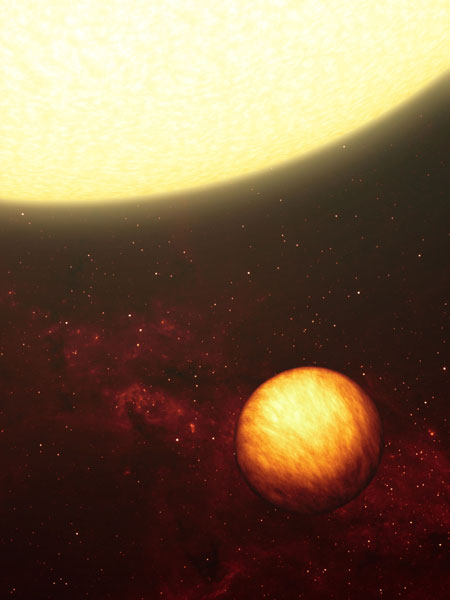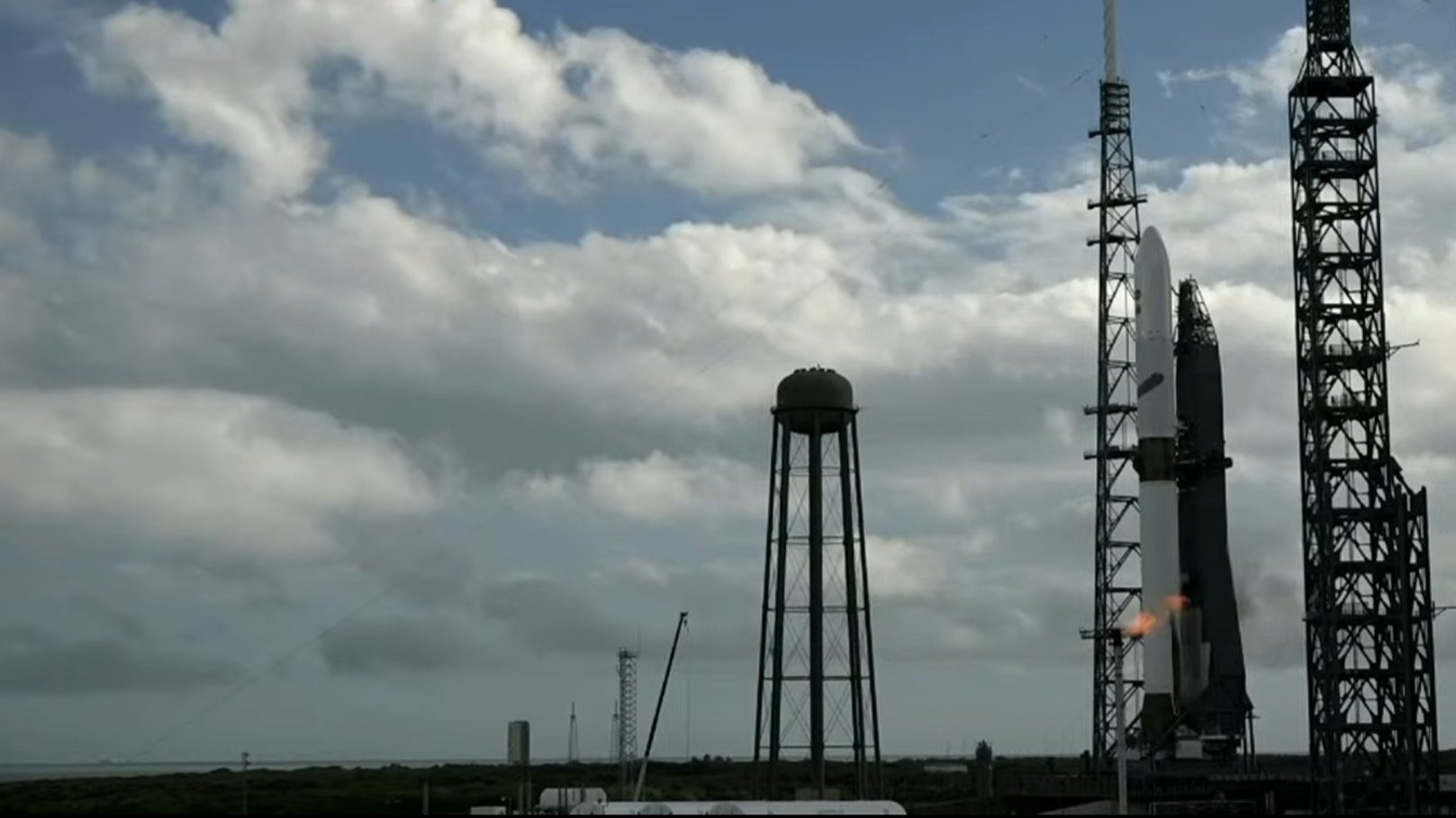Distant Planet is Half Fire, Half Ice

The poet Robert Frost wondered if Earth would wind up a world of fire or ice. Astronomers have discovered that a distant planet is both.
With one side always hot as lava and the other chilled possibly below freezing, Upsilon Andromeda b is a giant gas planet [image] that orbits extremely close to Upsilon Andromeda, a star 40 light-years from our solar system in the constellation Andromeda.
"If you were moving across the planet from the night side to the day side, the temperature jump would be equivalent to leaping into a volcano," said study leader Brad Hansen of the University of California, Los Angeles.
What's cooking
Researchers think Upsilon Andromeda b is absorbing and then immediately radiating heat from its star [animation], so that one side is always hotter than the other. It's also possible the planet is tidally locked to its star the way the Moon is with Earth, so that one side of the planet always faces-and is always heated by-its star.
Upsilon Andromeda b was discovered in 1996. It is what's known as a "hot-Jupiter," a gas giant circles its star in a very tight orbit, in this case 4.6 days. Two other planets also circle Upsilon Andromeda, but farther out.
The new finding, detailed online in the journal Science, marks the first time any kind of temperature variation has been seen across the surface of a planet outside our solar system.
Breaking space news, the latest updates on rocket launches, skywatching events and more!
How hot?
Using infrared data collected by NASA's Spitzer Space Telescope, the researchers calculated that temperatures on the sunlit side of the Upsilon Andromeda b were between 2,550 to 3,000 degrees Fahrenheit (1,400 to 1,650 degrees Celsius) but only minus 4 to 450 degrees Fahrenheit (-20 to 230 degrees Celsius) on the dark side. Jupiter, in contrast, maintains an even temperature all around.
Spitzer made infrared measurements of the planet at five different points during its orbit and found that its light levels went up and down, depending on whether its sunlit or dark side was facing Earth. From this data, astronomers calculated the temperature difference between the two sides.
"If the planet had just one equilibrium temperature, then all we would get would be a flat line," Hansen explained in a telephone interview.
New thinking
The findings likely apply to other hot-Jupiters as well, the researchers say.
"This observation completely changes our thinking about hot gas giant exoplanets," said study team member Sara Seager of the Carnegie Institution of Washington. "Most astronomers expected them to be more uniformly heated, much like Jupiter. But this planet clearly has a hot side and a cool side."
However, it's possible that Upsilon Andromeda's larger-than-average size has something to do with it, Hansen said. The star around which this planet orbits is slightly hotter and a little bit more massive than the Sun, he said. "How much that has an effect we don't really know."
- Stars May Be Eating 'Hot Jupiters'
- Top 10 Strangest Things in Space
- On Zippy New Planets, a Year is Just Hours Long
- Gallery: Spitzer Space Telescope Photo Album
Ker Than is a science writer and children's book author who joined Space.com as a Staff Writer from 2005 to 2007. Ker covered astronomy and human spaceflight while at Space.com, including space shuttle launches, and has authored three science books for kids about earthquakes, stars and black holes. Ker's work has also appeared in National Geographic, Nature News, New Scientist and Sky & Telescope, among others. He earned a bachelor's degree in biology from UC Irvine and a master's degree in science journalism from New York University. Ker is currently the Director of Science Communications at Stanford University.
